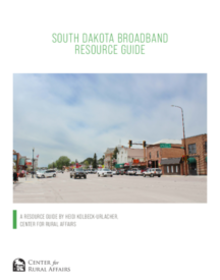Broadband access is essential in allowing rural communities to thrive. It ensures schools and health care services can function effectively, allows businesses to expand and remain competitive, and enables farm and ranch owners to take advantage of emerging technologies.
Yet, an estimated 42 million Americans do not have broadband access, many of them in rural areas. In 2019, South Dakota Gov. Kristi Noem said that in half of the state’s rural counties, a quarter of residents don’t have adequate internet access, and in some counties that number is as high as 50%. As of 2021, state officials estimated 135,000 people—or one in six South Dakotans—do not have adequate broadband access.
The economic impact of reliable broadband access is significant. It is associated with increased job and population growth, higher home values, lower unemployment rates, and higher rates of new business formation. Rural areas, which are disproportionately likely to lack broadband access, may be missing out on these valuable benefits. In late 2021, we surveyed South Dakotans to learn more about their broadband experiences. We wanted to hear directly from residents about what broadband is like in their communities, how they are using the internet to meet the needs of their daily lives, and how they rate their own digital literacy skills.
The responses indicated that many South Dakotans are still experiencing challenges with broadband access. For example, when asked if their current broadband meets their needs, only 33% of survey respondents said yes. This resource guide is intended to provide communities with information about the current state of broadband in South Dakota, uplift the voices and experiences of residents facing challenges related to access, and share resources and tools that will empower leaders to address broadband challenges in their communities.
Click through this interactive map to read more about rural broadband in South Dakota.


